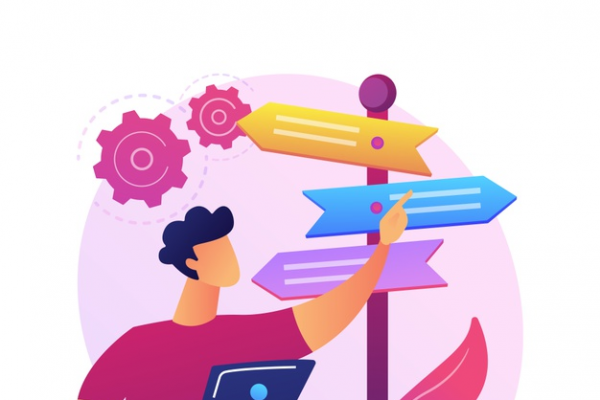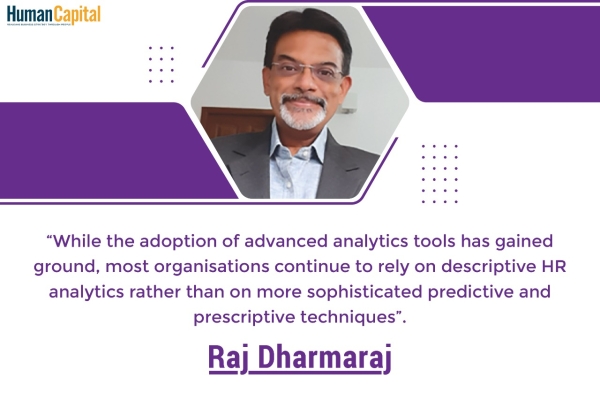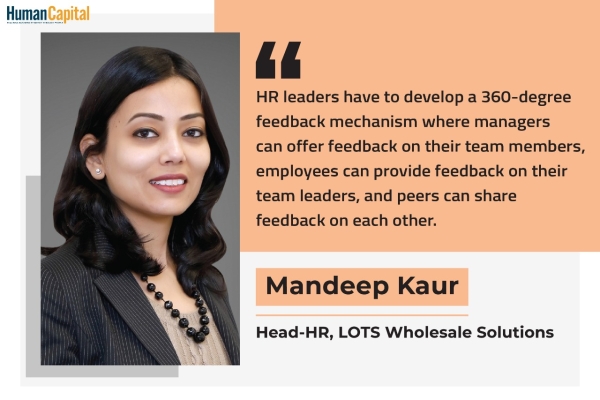Equipping employees with the necessary skills to enhance performance during the pandemic and in the future must be the organisational focus of the present.
Companies are circumspectly planning the return of a part of their workforce to offices in order to adapt to a new normal and a hybrid future, where an amalgamation of remote working and office attendees will transform the workplace. For the HR leaders, the most important goal will be to meet the evolving skill demands, since, according to the World Economic Forum’s Global Risks Report 2021, over 85 million jobs are likely to be automated in the next five years. According to Deloitte Insights, people now consider the ‘opportunity to learn’ as one of their top reasons while accepting a job. Business executives understand that changes in technology, longevity, work patterns, and business models have generated a significant demand for continuous and lifelong learning.
L&D is a ‘must have’
Learning & Development functions in companies have played a vital role throughout the pandemic, and their L&D budgets have increased significantly, with are likely to further increase in the near future. Several businesses are already paving the way for the future by rearranging organisational goals and workforce tactics. Released in February 2020, the McKinsey Global survey revealed that 87% of executives experience a skill gap in their workforce, but they were unsure as to how to address this problem. But now, organisations are investing in their employees’ learning to combat the skill gap.
Uncertainty has remained to be a constant since the outbreak of the pandemic and has resulted in agility in upskilling and reskilling assuming centre stage. As per recent industry reports, 54% of the world’s workforce will need reskilling and upskilling by 2022, and in the present situation, the emphasis is only likely to increase in the years to come. Successful businesses will invest in upskilling and reskilling their personnel, as well as more strategically managing both long-term career development and the day-to-day work experience, all the while ensuring that they are aligned to the corporate objectives.
In the hybrid world, businesses will benefit immensely from upskilling and technology. Pandemic or not, one must learn to live in the age of hyper-competition by bringing a great deal more to the table. In addition, workers’ social, soft, and emotional skills will be crucial to their development. HR leaders will need to provide employees with greater opportunities to learn new skills, let go of old ones, and reskill, adopting unique learning methods.
Soft Skills will take centre stage
In addition to skills such as creativity, critical thinking, intellectual curiosity and innovation, empathy, and decision-making, will be in utmost demand among organisations. Adaptability, bundled with perseverance, will be at the forefront of how employees and employers need to be aligned.
Soft skills have frequently been overlooked or dismissed when evaluating company leaders, but as we venture into the third year of the pandemic, they will take centre stage in the talent competition. HR leaders must assist managers in developing the skills they need to navigate difficult conversations that create team cohesion, inclusion, and psychological safety in order to support the workforce. This requires training managers on how to not merely navigate vulnerable conversations, but also how to tailor their approach to individual employees to gain a thorough knowledge of their actions in context.
Building a Knowledge sharing culture
Developing knowledge management systems is a great and efficient way of facilitating a collaborative sharing culture. However, as we move to a digital age, HR departments need to rethink their knowledge management systems. They will be able to streamline the types of functions they utilise on a daily basis if they choose the appropriate programme.
A low cost and easily scalable knowledge-sharing platform encourages collaboration and organises files, folders, e-mails, and calendars. It also makes it simple for team members to collaborate on content and other tasks, whether they are in the same office or working remotely. Since working in a collaborative knowledge-sharing culture does not come naturally to everyone, one method to encourage it is to provide employees with an incentive to speak out about what they know or share relevant stuff they find online with their team.
Equipping Teams for Resilience
As a result of the tendency toward hybrid work, teams are becoming more geographically dispersed. To help managers create resilience and collaboration within their teams, organisations must invest in tools and technologies that enable purposeful collaboration — both synchronously and asynchronously. Employees can be encouraged to create newer collaboration habits that work for them in today’s reality by offering fair access to a variety of worksite options and calibrating virtual team standards within their work groups, while being mindful of social, cultural or time zone differences. HR executives should also give managers the ability to realign performance management goals with company priorities, reprioritise resources when circumstances change, and ensure that critical outcomes are visible to direct reports.
People Analytics transforming L&D
Many businesses are attempting to develop ways to bridge the skill gap. Companies worry about how to effectively deploy their L&D budgets because it is a key enabler of skill development. Now, the possibilities are limitless! Organisations can, for example, focus on one specific skill to determine which training is most helpful in developing that skill. This is especially effective for knowledge-based abilities. It is advised that data on coaching and behavioural programmes be included for soft skills such as delegation and collaboration.
Additionally, with the expanding amount of data, firms can determine where L&D initiatives are most effective in developing skills and where they are not. Today, the number of businesses with a well-developed skill-taxonomy is still small, but the field is rapidly evolving. Skill taxonomy, skill inference, and level ratings are all being worked on by both specialised vendors and major corporations. As a result, people analytics has a huge opportunity to help overcome the talent gap.
Ultimately, organisations need to create an ecosystem where multiple stakeholders take responsibility for various parts of the skilling pie – there are parts that organisations have to do, parts that employees have to do and parts that training institutions need to do in order to create the larger skills universe.
Learning will move from mass to customisation, enabling learning to be delivered to the employees in a more personal way, integrating work and learning more closely together, extending learning ownership beyond the HR department, and looking for ways to incorporate solutions we bring into play in our daily lives into the workplace learning environment. Onedimensional learning paths must be unlearned, and person-based growth paths must be curated. We need to start thinking about matrix careers and giving people opportunities to explore new things. Organisations must programme a step-by-step approach to incorporate these elements into their learning strategy, which includes understanding and creating career paths using a role matrix and roles dictionary, skillmapping for each role, assessing people for both current and potential roles, and then implementing skill development programmes.
Is your organisation post-COVID-ready?
Trending
-
SBI General Insurance Launches Digital Health Campaign
-
CredR Rolls Out 'Life Happens' Leave For Its Employees
-
Meesho Announces 30-Week Gender-Neutral Parental Leave Policy
-
Microsoft Unveils Tech Resilience Curriculum To Foster An Inclusive Future
-
60% Indian Professionals Looking For Job Change Due To COVID: Survey
-
SpringPeople And Siemens Collaborate For Digital Transformation Push
-
86% Professionals Believe Hybrid Work Is Essential For Work Life Balance: Report
-
Almost 1 In Every 3 People's Personal Life Affected Due To Work Stress
-
Meesho Rolls Out Reset And Recharge Policy For Employees
-
80% Of Talent Leaders & Academics Say Pandemic Changed Skill Needs For Youth: Report
-
Hero Electric Rolls Out 'Hero Care' Program For Employees
-
Human Capital In Collaboration With ASSOCHAM Hosts Virtual Conference
-
IKEA India, Tata STRIVE Collaborate To Create Employability And Entrepreneurship Opportunities
-
SAP India, Microsoft Launch Tech Skilling Program for Young Women
-
DXC Technology, NASSCOM Collaborate For Employability Skills Program
-
Lenskart To Hire Over 2000 Employees Across India By 2022
-
Mindtree Launches Learn-and-Earn Program
-
Tata AIA Extends 'Raksha Ka Teeka' To Its Employees
-
Swadesh Behera Is The New CPO Of Titan
-
NetConnect Global Plans To Recruit 5000 Tech Professionals In India
-
Hubhopper Plans To Hire 60% Of Indian Podcasters By 2022
-
Corporate India Needs More Women In Leadership Roles: Report
-
Aon to Invest $30 Million and Create 10,000 Apprenticeships by 2030
-
Tech Mahindra Launches ‘Gift a Career’ Initiative for Upskilling of Youth
-
40% Women Prefer Flexible Working Options in Post-COVID World: Survey
-
3 out of 4 companies believe they can effectively hire employees virtually: Report
-
Vodafone , CGI and NASSCOM Foundation launch digital skills platform
-
Odisha: Bank, postal employees to deliver cash for elderly, differently-abled persons
-
Skill India launches AI-based digital platform for "Skilled Workforce"
-
Hiring activity declines 6.73% in first quarter: Survey
-
70% startups impacted by COVID-19 pandemic
-
Bajaj Allianz Life ropes in Santanu Banerjee as CHRO
-
Over 70 Percent MSMEs look at cutting jobs to sustain businesses
-
93 Per Cent employees stressed about returning to office post-lockdown
-
Johnson & Johnson India announces family benefits for same gender partners
-
Indian firms turning friendly towards working mothers
-
Welspun India names Rajendra Mehta as new CHRO
-
Wipro partners with NASSCOM to launch Future Skills platform



Human Capital is niche media organisation for HR and Corporate. Our aim is to create an outstanding user experience for all our clients, readers, employers and employees through inspiring, industry-leading content pieces in the form of case studies, analysis, expert reports, authored articles and blogs. We cover topics such as talent acquisition, learning and development, diversity and inclusion, leadership, compensation, recruitment and many more.
Subscribe Now












































Comment